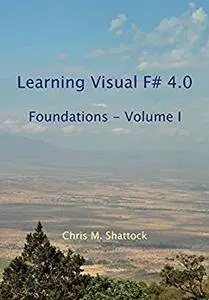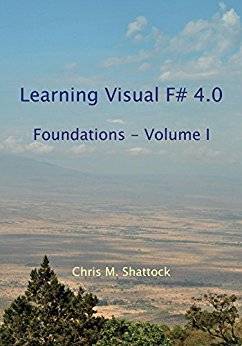Learning Visual F# 4.0: Foundations (Volume Book 1)
English | 2017 | ASIN: B073Z1RMWK | 734 pages | AZW4 | 16.65 Mb
English | 2017 | ASIN: B073Z1RMWK | 734 pages | AZW4 | 16.65 Mb
Learn F# as a general-purpose programming language in a number of business oriented scenarios whilst making use of the .NET Framework and the Community Edition of Visual Studio 2015.
The book, in two volumes with 62 hours of accompanying videos, concentrates upon learning the language using what many would call “real world” examples. The intent is that an inexperienced programmer, or one who has little exposure to application development, can gain a sound understanding of the primary concepts and usage of F# in generalised application development scenarios.
Further information and sample content/videos at http://vfsfoundations.com
This is not a "grand tour" of the features of the F# Language nor of "Functional Programming" theory and practice. Nor are there trivial, non-interconnected sequences of code fragments to demonstrate some of these features using inane examples in terms of "games" or imaginary "requirements". Furthermore, whilst there is a degree of technical jargon regarding classes (as in object-oriented programming) and most specifically using the Extensible Markup Language (XML), these are "mild" pre-requisites and it is sufficient, to my mind, for the interested reader to watch two introductory videos on these matters.
I make as little direct reference as I can to the underlying jargon of functional programming: I introduce F# data types, concepts etc. as and when they are required in the progression through the material with the objective of furthering our application requirements at that time. This material is not therefore either to be regarded as a "technical manual" of F# or its many nuances and techniques, or a comparison with other languages but, rather, an attempt at just progressively showing the reader how to develop code with the language for its own sake in meeting business requirements that may make use of the .NET Framework.
In Volume I we cover an introduction to Visual F# 4.0 and the Community Edition of Visual Studio 2015. We adopt the theme of globalisation and the creation and access of a variety or resources that, amongst other uses, cover the internationalisation aspects of software development in this environment.
We introduce, use and extend the .NET RESX methodology via F# and its collection types and use this methodology as the basis of constructing Console and Windows Forms applications that exercise resource access and the modification of underlying RESX XML files.
There are many things to learn thereby about resources but, to extend our reach, we then consider the usage of the Windows Presentation Foundation under F# control that requires a detailed consideration of .NET and F# Reflection, the dynamic loading of assemblies and invocation of types therein and extend our resource consideration to cover any type of resource within an assembly manifest – including both raw and optimised XAML resources.
The consideration of Windows Presentation Foundation (WPF) based resources requires one to also consider a variety of recursive functions for accessing their control hierarchy as well as a simplistic, in principle, recursive discriminated union to graph a framework element and all of its descendants. Alongside such functionality, the dynamic update of WPF images from assembly manifest specified resources.



